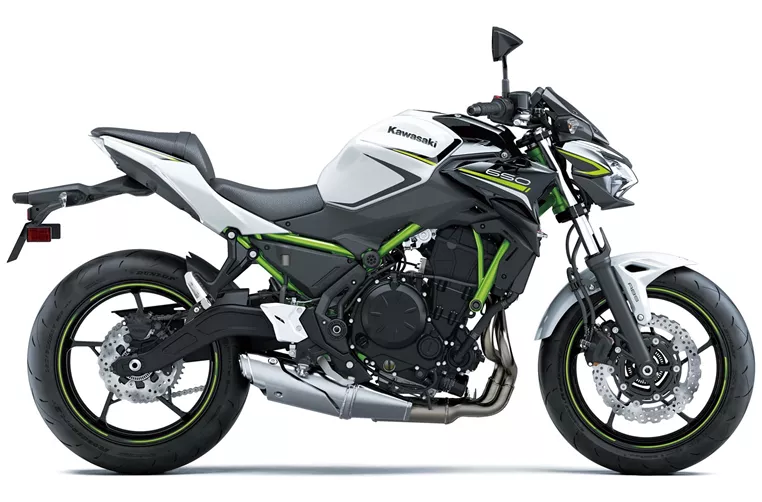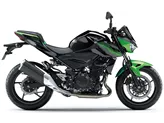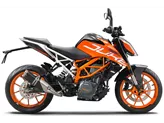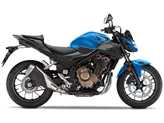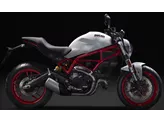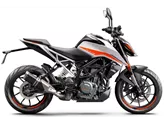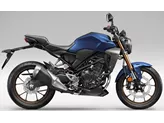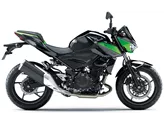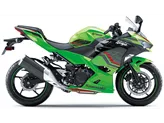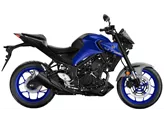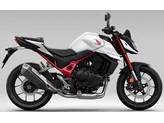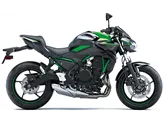Kawasaki Z650 2020 vs. Kawasaki Z 400 2019
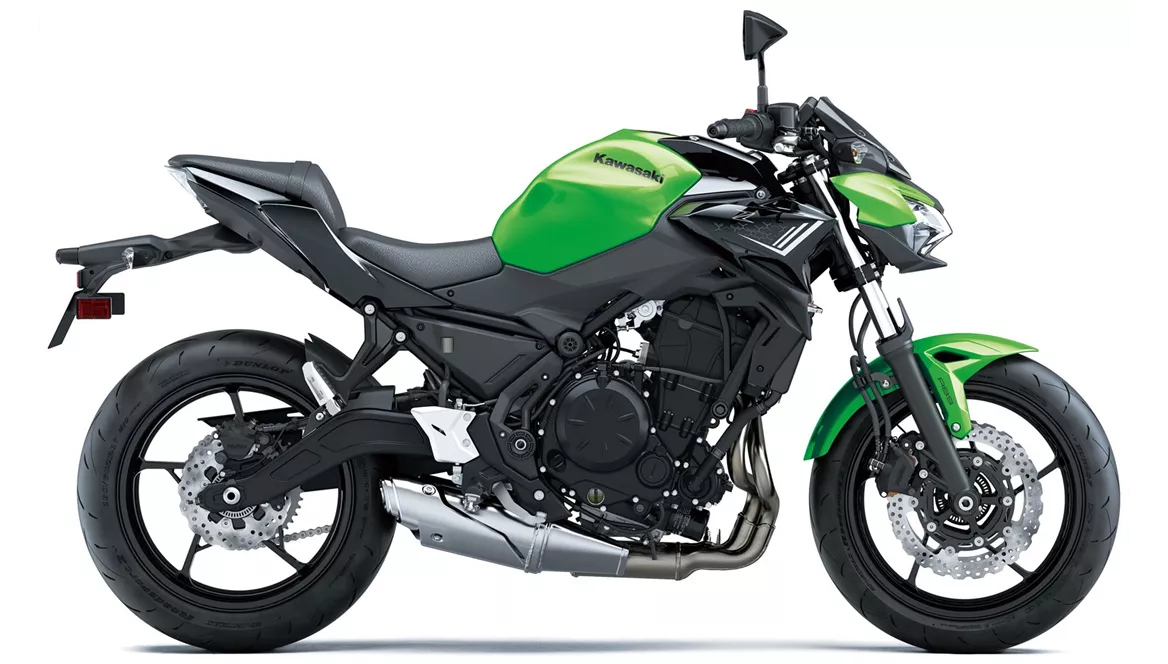
Kawasaki Z650 2020

Kawasaki Z 400 2019
Visão geral - Kawasaki Z650 2020 vs Kawasaki Z 400 2019
The Kawasaki Z650 2020 and the Kawasaki Z 400 2019 are both naked bikes from Kawasaki, but they have some notable differences in terms of specifications and features.
Starting with the engine, the Z650 2020 is equipped with an inline twin-cylinder engine that produces 68.2 HP of power and 65.7 Nm of torque. On the other hand, the Z 400 2019 also features an inline twin-cylinder engine but with a lower power output of 45 HP and torque of 38 Nm. This makes the Z650 more powerful and provides a more exhilarating riding experience compared to the Z 400.
Both bikes have fuel injection systems and liquid cooling for efficient performance. The Z650 has a larger displacement of 649cc, while the Z 400 has a smaller displacement of 399cc. This means that the Z650 has a higher capacity for power delivery and overall performance.
In terms of suspension, both bikes feature telescopic forks at the front and a monoshock at the rear with pre-load adjustment. This allows for a comfortable and controlled ride, with the ability to adjust the suspension to suit the rider's preferences.
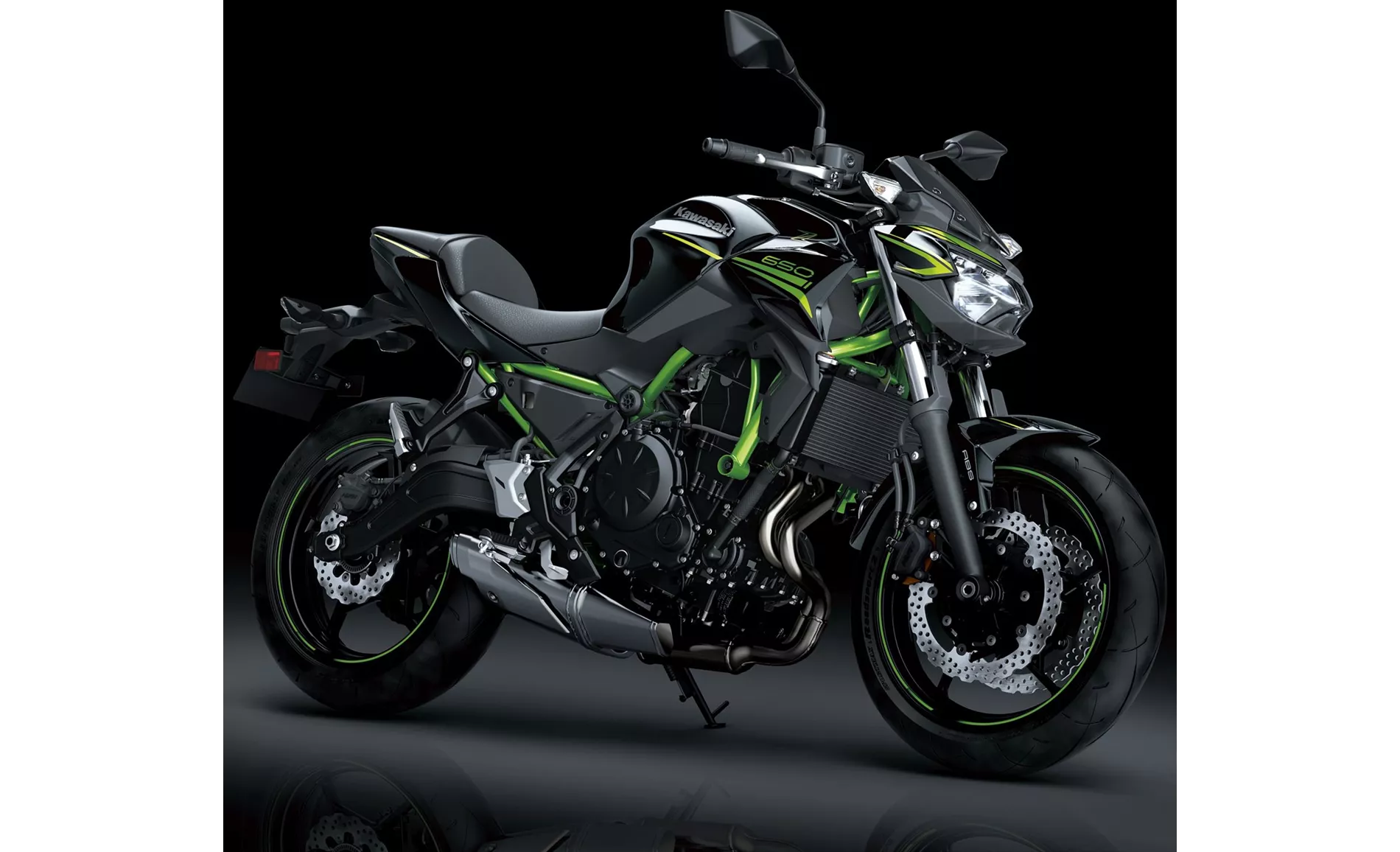
Kawasaki Z650 2020
The chassis of both bikes is made of steel and features a tubular frame, providing stability and durability. However, the Z650 has a slightly longer wheelbase of 1410mm compared to the Z 400's 1370mm. This may result in slightly different handling characteristics between the two bikes.
When it comes to braking, the Z650 is equipped with dual disc brakes at the front with a diameter of 300mm, while the Z 400 has a single disc brake with a larger diameter of 310mm. Both bikes have dual-piston calipers and utilize petal technology for efficient and reliable braking performance. Additionally, both bikes come with ABS as standard, ensuring safe and controlled braking in various conditions.
In terms of dimensions and weight, the Z650 has a wider front tire of 120mm and a wider rear tire of 160mm, compared to the Z 400's 110mm front tire and 150mm rear tire. The Z650 also has a slightly higher seat height of 790mm compared to the Z 400's 785mm. However, the Z 400 is lighter, weighing 167kg compared to the Z650's 187.1kg (both weights include ABS).

Kawasaki Z 400 2019
Both bikes have a fuel tank capacity of 14 liters for the Z 400 and 15 liters for the Z650, providing a decent range for long rides.
In terms of strengths, the Z650 2020 offers a powerful twin-cylinder engine, aggressive intake noise, compact dimensions, low seat height, stable chassis, TFT screen with connectivity, and a mature appearance. On the other hand, the Z 400 2019 boasts excellent and controllable power, reduced weight, a comfortable seating position, excellent sound, and is well-suited for beginner riders.
However, there are some weaknesses to consider. The Z650 may have a point of pressure on the front brake, which could affect braking performance. It may also be uncomfortable for taller riders, and the Rideology application may not be fully sophisticated. The Z 400, on the other hand, has non-adjustable clutch and brake levers and limited chassis adjustability.
In conclusion, the Kawasaki Z650 2020 and the Kawasaki Z 400 2019 are both impressive naked bikes from Kawasaki, offering different levels of power and performance. The Z650 is more powerful and suitable for riders looking for a thrilling experience, while the Z 400 is more beginner-friendly with its manageable power and lighter weight. Both bikes have their own strengths and weaknesses, so it ultimately comes down to the rider's preferences and intended use.
Especificações técnicas Kawasaki Z650 2020 em comparação com Kawasaki Z 400 2019
Prós e contras em comparação
Prós e contras em comparação
Kawasaki Z650 2020
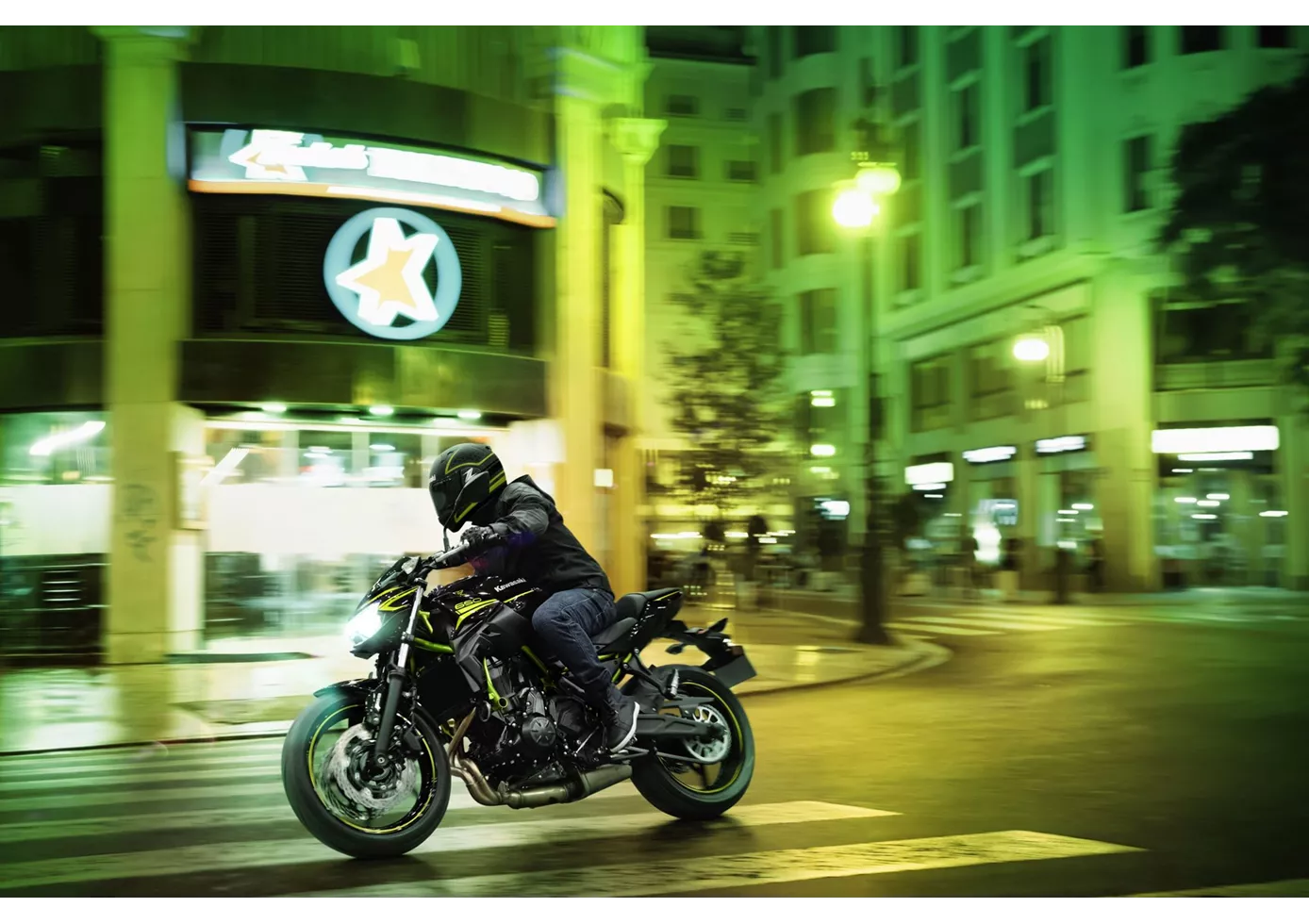
É simplesmente maravilhoso o que a Kawasaki juntou num pacote completo com a nova Z650. Os componentes técnicos podem não impressionar individualmente, mas em conjunto formam uma mota agradavelmente neutra que todos irão apreciar. Não há idiossincrasias desagradáveis - simplesmente uma mota naked que funciona muito bem em estradas rurais sinuosas. Claro que o ecrã TFT, que não encontramos na concorrência neste momento, é uma mais-valia, tal como o aspeto adulto, que está fortemente orientado para os modelos Z maiores. Apenas o ponto de pressão do travão dianteiro poderia ter sido mais claramente definido - mas não se pode ter tudo nesta gama de preços.
Kawasaki Z 400 2019

A Kawasaki Z400 é definitivamente uma grande evolução da sua antecessora, a Z300. Mais potência, menos peso - em suma, simplesmente uma moto ainda melhor. Acima de tudo, a entrega de potência linear e o excelente manuseamento fazem da Z400 uma moto de entrada de gama ideal. A facilidade de operação da embraiagem e a boa configuração do quadro também estão nesta linha, razão pela qual a Z400 pode ser recomendada sem hesitação a pilotos principiantes.
Comparação de preços Preço médio de mercado Kawasaki Z650 vs Kawasaki Z 400
There are a few key differences between a Kawasaki Z650 2020 and a Kawasaki Z 400 2019. In terms of price, the actual average price of a Kawasaki Z650 2020 is about 32% higher. A Kawasaki Z650 2020 experiences a loss of 200 BRL in one year of ownership. This is offset by a loss of 1.810 BRL for a Kawasaki Z 400 2019. Compared to Kawasaki Z 400 2019 there are more Kawasaki Z650 2020 bikes available on the 1000PS.de Marketplace, specifically 21 compared to 6. It takes less time to sell a Kawasaki Z650 with 80 days compared to 99 days for a Kawasaki Z 400. Since model year 2017 1000PS.de editors have written 31 reviews for the Kawasaki Z650 and 8 reviews for the Kawasaki Z 400 since model year 2019. The first review for the Kawasaki Z650 was published on 08/11/2016 and now has more than 25.000 views. This compares to more than 23.200 views for the first review on Kawasaki Z 400 published on 02/10/2018.
